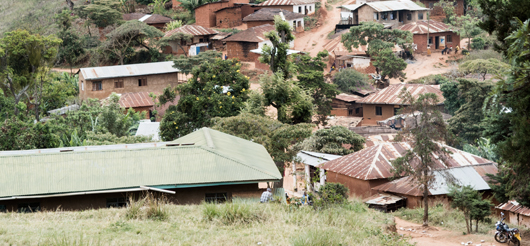Aspects to be considered for evaluation in indigenous communities and territories
General aspects to be considered
It should be borne in mind that the situation of ICT in Latin America is extremely diverse and that the actions that LAPs can take to contribute to their recognition may vary accordingly.
It is consequently not possible to standardize LAP action plans in these territories, however they should be designed considering national legal frameworks, the scope of LAPs and the specific context of each population. Nevertheless, the planning and implementation of recognition, titling or demarcation processes in indigenous communities and territories by LAPs should be carried out in line with the precepts of free, prior and informed consent mechanisms.
Evaluating compliance with these plans thus requires a participatory process to be carried out in which both institutions and populations have rights to recognise and formally establish levels of authority, decision-making mechanisms, and forms of participation. This is particularly necessary in countries or municipalities which do not yet have formal central state and local recognition of indigenous territories and populations as players in land administration.
Considering territorial rights
The security and legal certainty of tenure of indigenous communities and territories is closely bound to cultural and symbolic factors which connect the space to specific forms of political and economic management.
The degree of security and legal certainty of tenure of ICT should consequently be considered a set of rights to which right of tenure gives access for communities and on which their wellbeing and reproduction depend. This set of rights can be increasing and can range from access to territory to the possibility of alienation1:
- Access
Right of entry to an area - Use and right of enjoyment
Right to use resources or waive that right - Management
Right to regulate patterns of use or transformation of resources - Exclusion
Right to decide who can or cannot have access to natural resources - Alienation
Right to sell, rent or grant rights to use natural resources
Land disputes
Disputes relating to access to and use of territory and the natural resources contained therein have been identified as one of the main threats to security of tenure for inhabitants and local governance. The term “dispute” refers here to the set of phenomena surrounding territorial demands, internal administration in indigenous territories and their natural resources. These disputes generate tensions both within and outside the community, affecting indigenous territorial rights and the consolidation of their territories and forms of government.
For a correct evaluation of the LAP intervention in ICT, the various types of disputes relating to these territories need to be identified:
- Disputes relating to the demarcation of territories where rights exist or which are occupied by individuals, companies, plantations or urban areas unconnected with the people, community or communities claiming ancestral rights.
- Disputes deriving from the occupation of internal sectors of the territory by “third parties”, i.e. individuals who do not belong to the people to whom the land will be titled. In this case it is important to distinguish the type of occupation. The situation is very different when dealing with long-established peasants who have links with the community, including family alliances, recent settlers, agro-industrial plantations, or exploitation of timber or industrial plants, among others.
- Disputes relating to the territorial planning and authorities system, such as aspects relating to the recognition by the population of the territorial and local authority hierarchy, and forms of participating in decision making.
- Internal disputes with families or individuals belonging to the same indigenous people but from different communities, who claim rights of use or possession.
- Disputes between outcomes of disputes over rights, limits use of water, gathering or hunting, among other things.
- Disputes due to transactions or management of land or natural resources in collective use.


